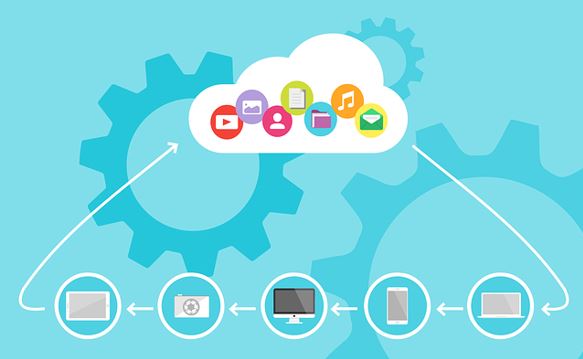Overcoming Key Challenges in Application Migration to the Cloud
Migrating to the cloud is a strategic decision for any business that desires to maintain a competitive edge in the constantly shifting corporate landscape.
Cloud migration fosters operational scalability and agility by allowing organizations to accurately anticipate trends and swiftly adapt to evolving market dynamics. It also enhances data security by providing access to fail-proof backups and recovery architectures.
For businesses with teams spread across multiple time zones, cloud-based tools enhance seamless collaboration and communication. Moreover, maintaining cloud infrastructures is now a regulatory requirement in various jurisdictions.
But despite the numerous perks of cloud migration, there are pitfalls to contend with. Implementing the wrong migration strategy can result in a complex migration process, low application performance after migration, and many hidden costs.
Therefore, careful planning is key to overcoming the common challenges in application migration to the cloud. This post discusses five such strategies.
1. Choosing Your Cloud Architecture
Selecting proper cloud infrastructure is a common challenge when migrating applications to the cloud. While multiple options abound, it’s best to choose the architecture that serves your company’s present needs while providing an opportunity to scale your operations in the future.
To effectively address this element of application migration to cloud checklist, establish the size of your current workforce and IT infrastructure. Then, determine the desired level of scalability and pick a cloud architecture that guarantees maximum efficiency and security for your migrated applications.
In most cases, the choice comes down to public versus private cloud. The public cloud is ideal for mid-sized to large organizations looking to scale their operations with minimal costs. In contrast, the private cloud is perfect for businesses that desire higher control of their cloud architectures.
Even better, implementing a hybrid cloud infrastructure could unlock the best of both worlds.
2. Understanding Application Compatibility
Migrating legacy applications to the cloud can present immense challenges for organizations that adapt slowly to evolving technologies. However, a bigger concern is getting these systems to function optimally in a cloud environment. Therefore, it’s imperative to assess your applications’ cloud-readiness before migrating them to the environment.
Analyze your current architecture to determine the best deployment approach while migrating to the cloud. For legacy applications, experts recommend the lift and shift approach as it requires minimal application architecture changes or code revisions.
Next, review the technical requirements for each application, including dependencies and ease of integration with cloud-based services.
Other effective migration strategies include refactoring and re-platforming. Refactoring entails modifying your existing applications to adapt to the cloud environment, while re-platforming involves migrating your applications without implementing significant changes.
Moreover, you could rebuild your applications (rewrite them from scratch) or replace them altogether.
3. Managing Data Security and Compliance
Cyber-attacks pose an existential threat to businesses. While cloud-based infrastructures implement advanced data protection protocols, breaches aren’t unheard of.
To safeguard data security during application migration to the cloud, it’s prudent to implement robust security measures like encryption. Deploy encryption both in transit and at rest, as data breaches can occur anytime and often without warning.
A foolproof access control protocol is also paramount. Assign members of your IT staff log-in credentials depending on unique access privileges. This ensures your organization’s most sensitive information is accessible only to a handful of trusted personnel.
Since moving to a cloud system largely entails entrusting third-party entities with your data, picking a reputable cloud provider is also imperative. Research extensively to establish that the company is up to date on data security and compliance practices.
4. Mitigating Downtime and Minimizing Business Disruption
Migrating applications to the cloud can cause serious operational downtimes. Without swift interventions, these disruptions can translate into massive economic losses and reputational damage.
Fortunately, you can minimize downtime through phased migration. This approach entails segmenting your migration into different components rather than undertaking the entire project in one fell swoop. It makes it easier to detect and fix any cloud data migration challenges.
You could also reduce migration downtimes by leveraging cloud backup systems.
Also known as remote or online backup, cloud backup systems let you copy your data to multiple cloud servers. It provides alternative data reference points during latencies in one of your cloud-based servers.
Don’t forget to test your applications after migration. Post-migration testing lets you detect any performance degradation or data corruption issues that might have gone undetected during the migration process.
5. Preparing the Team Adequately
Contrary to popular misconception, migrating your applications to the cloud doesn’t spell the end of your IT support staff. Whether you maintain an in-house technical team or prefer to outsource IT services on a need basis, it’s imperative to prepare the team adequately for the move.
First, ensure your current IT team is duly equipped to handle the capabilities of the new cloud-based systems. If not, you may need to reskill or upskill them. Ultimately, you want a team of technicians adequately trained in cloud technology.
Next, engage your IT support actively throughout the migration process. With more eyes supervising your application migration, you can pinpoint performance issues more accurately.
Lastly, assign individual and team responsibilities. This ensures everyone has a part to play in the migration process.
Wrap Up
Cloud migration is a complex process fraught with immense challenges. But with a robust migration strategy, you can overcome those pitfalls and unlock the benefits of cloud-based infrastructures, including business scalability and enhanced cybersecurity.
Remember, the surest way to navigate the complexities of cloud migration is to tap into professional help.




